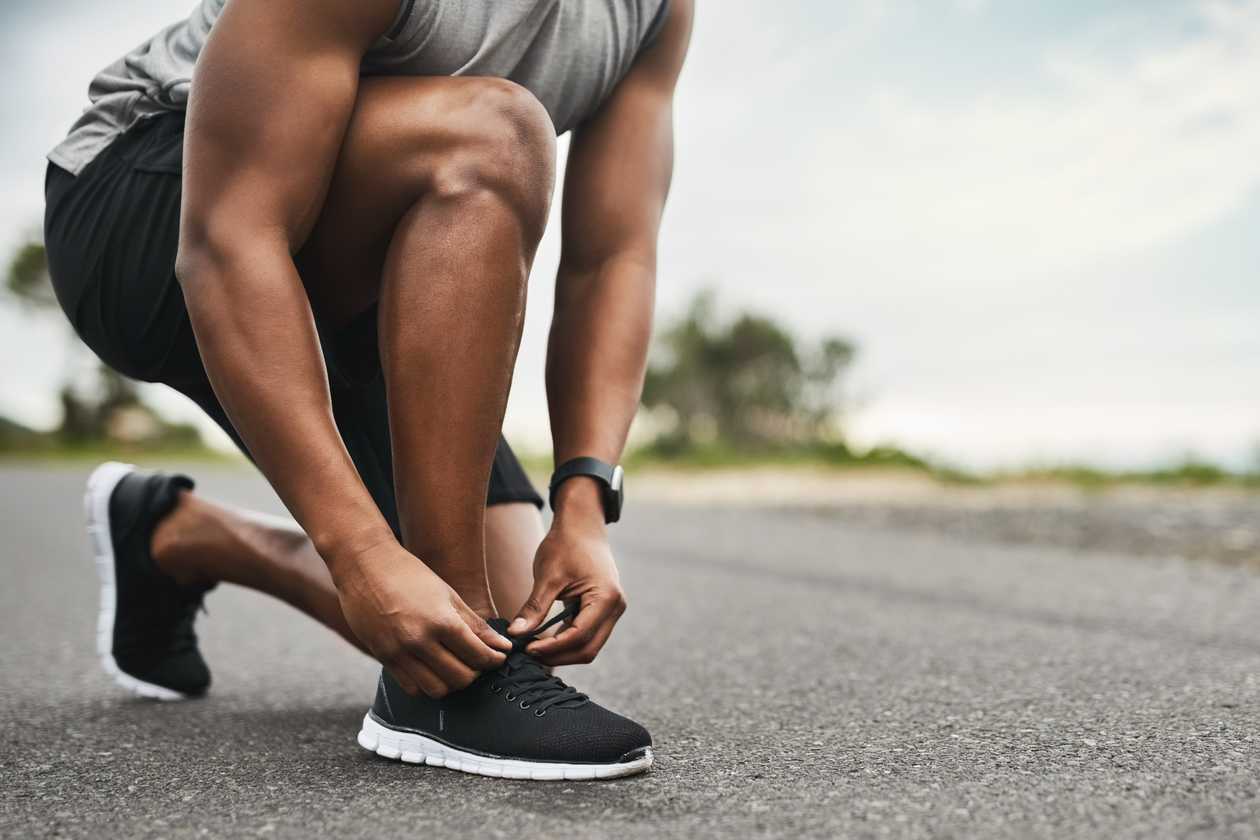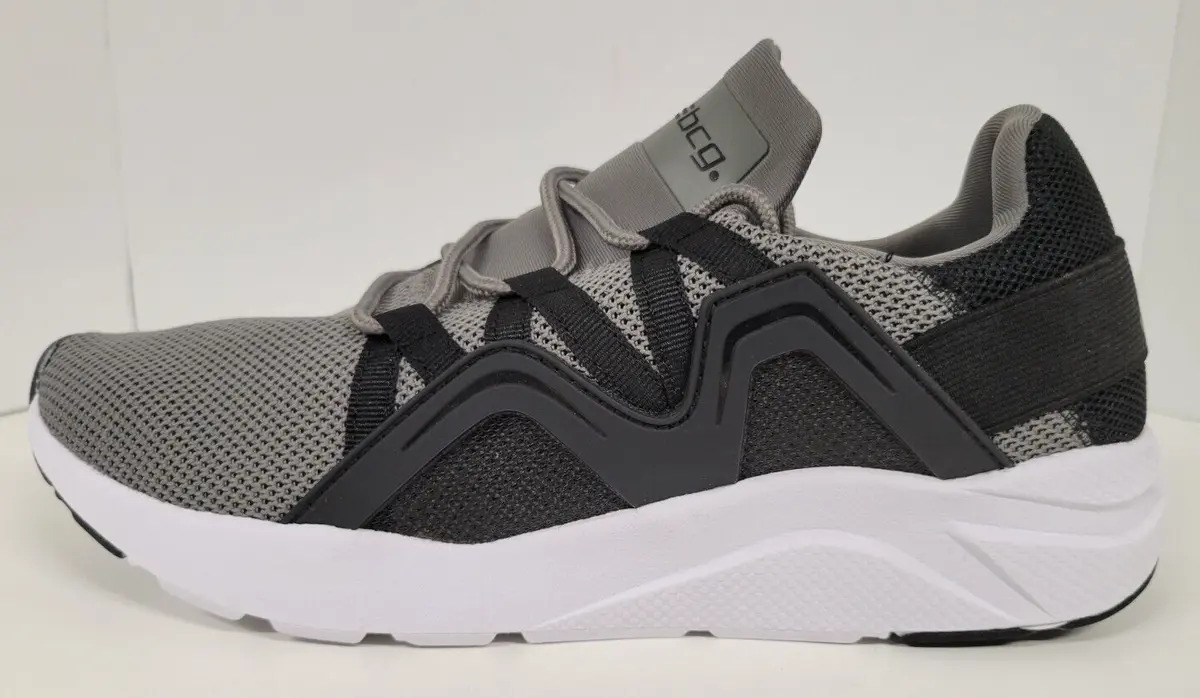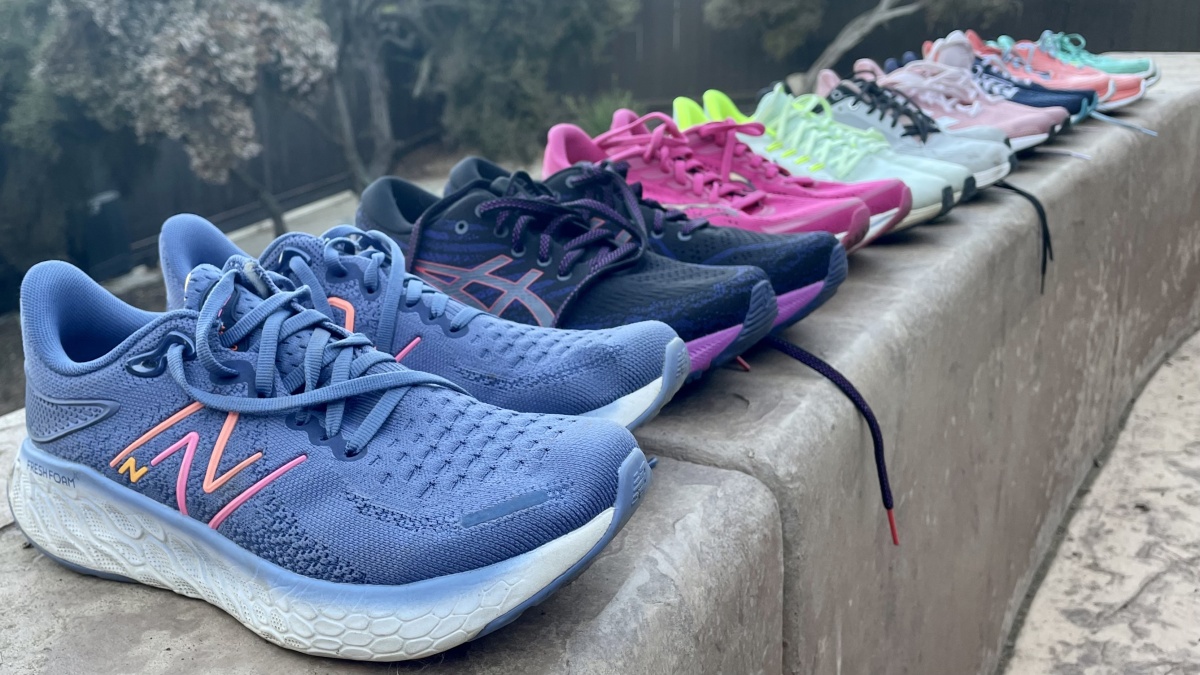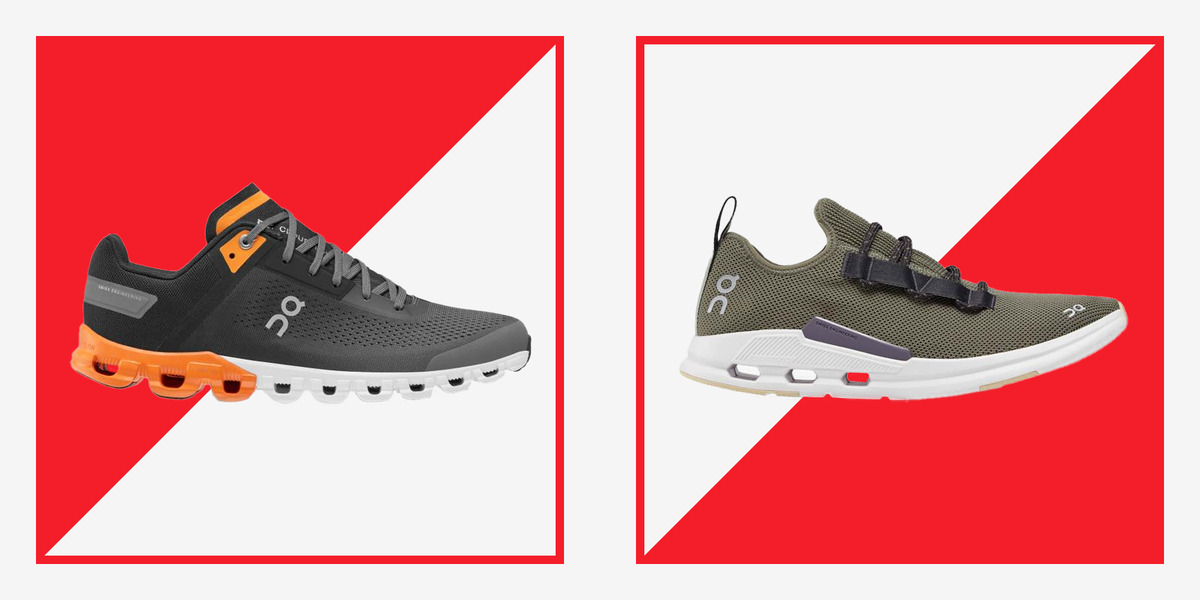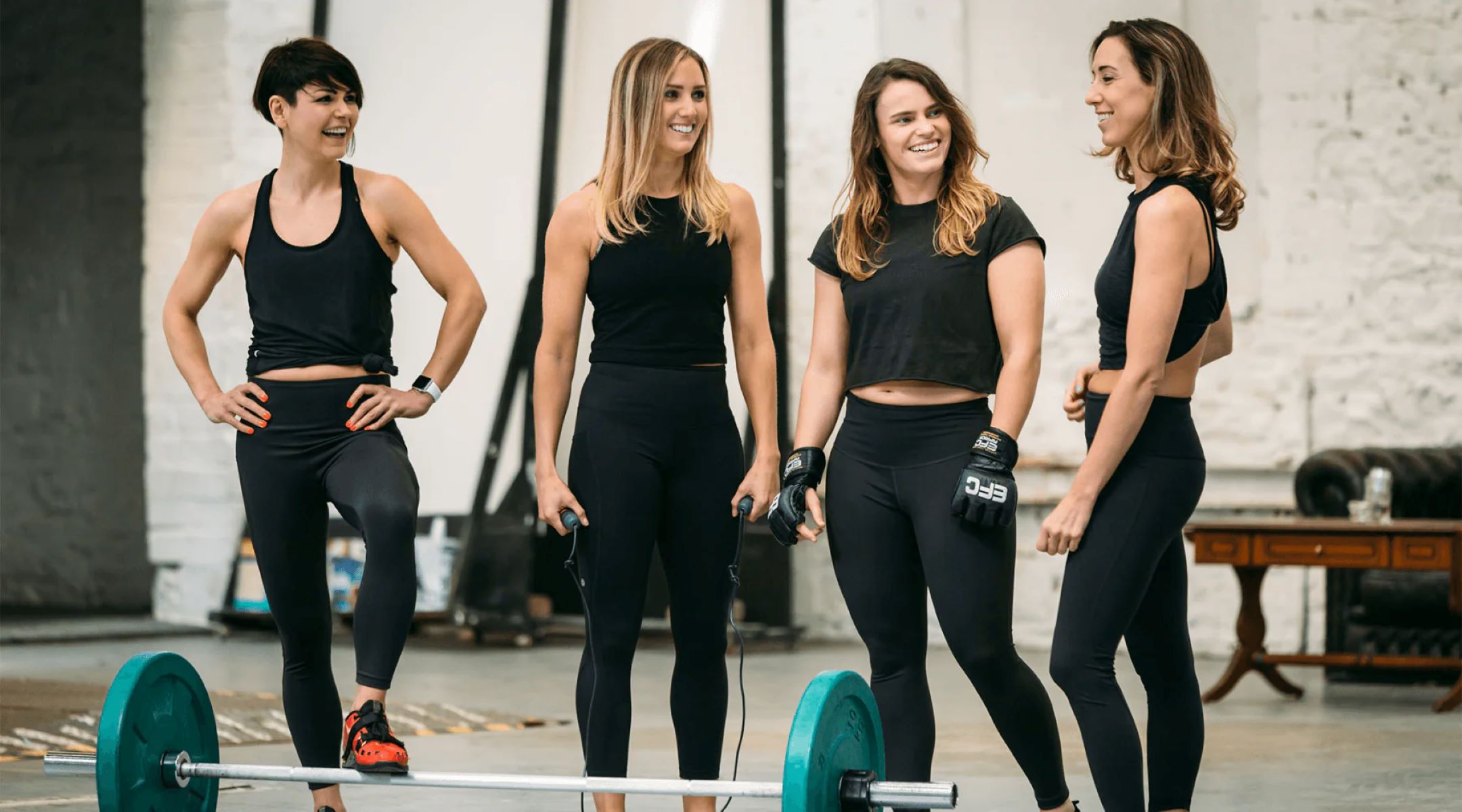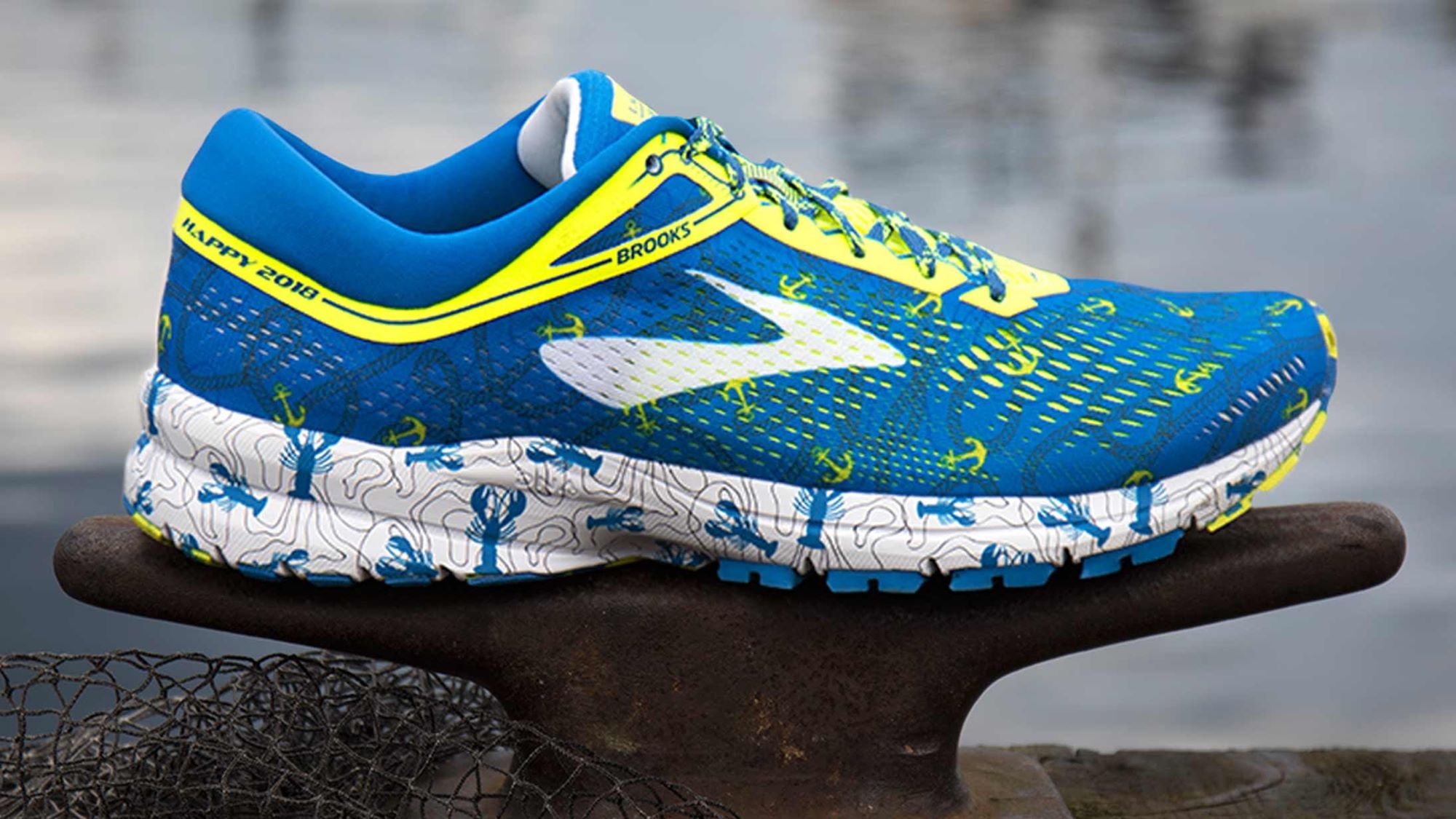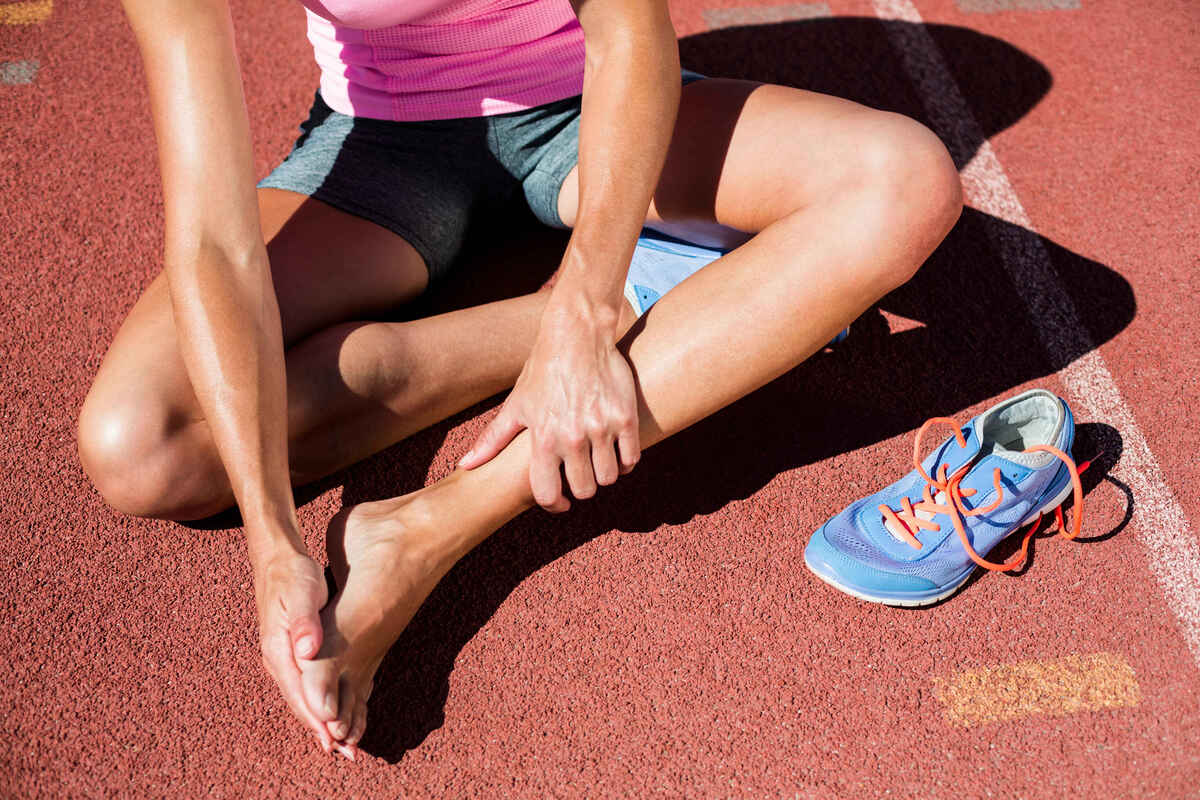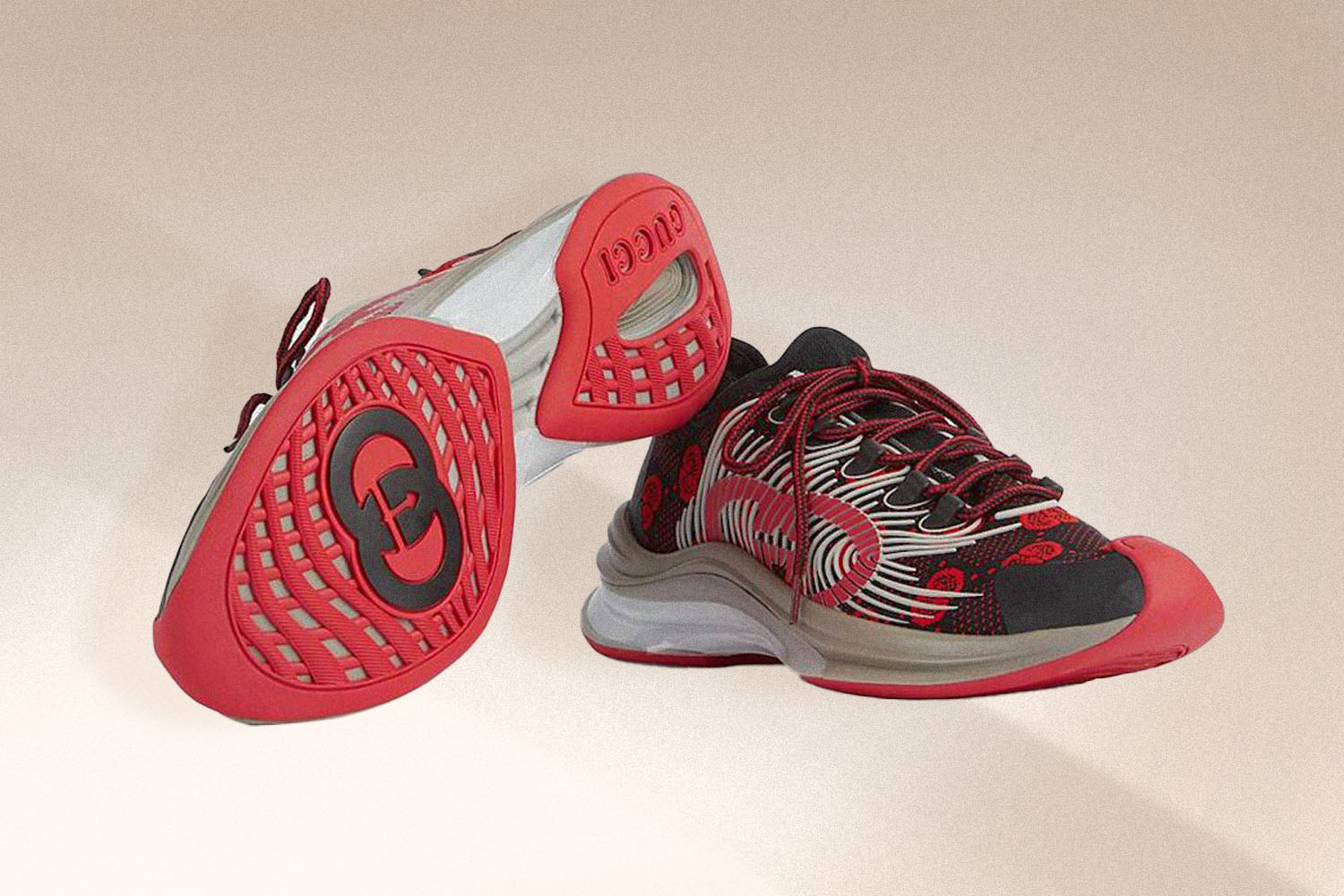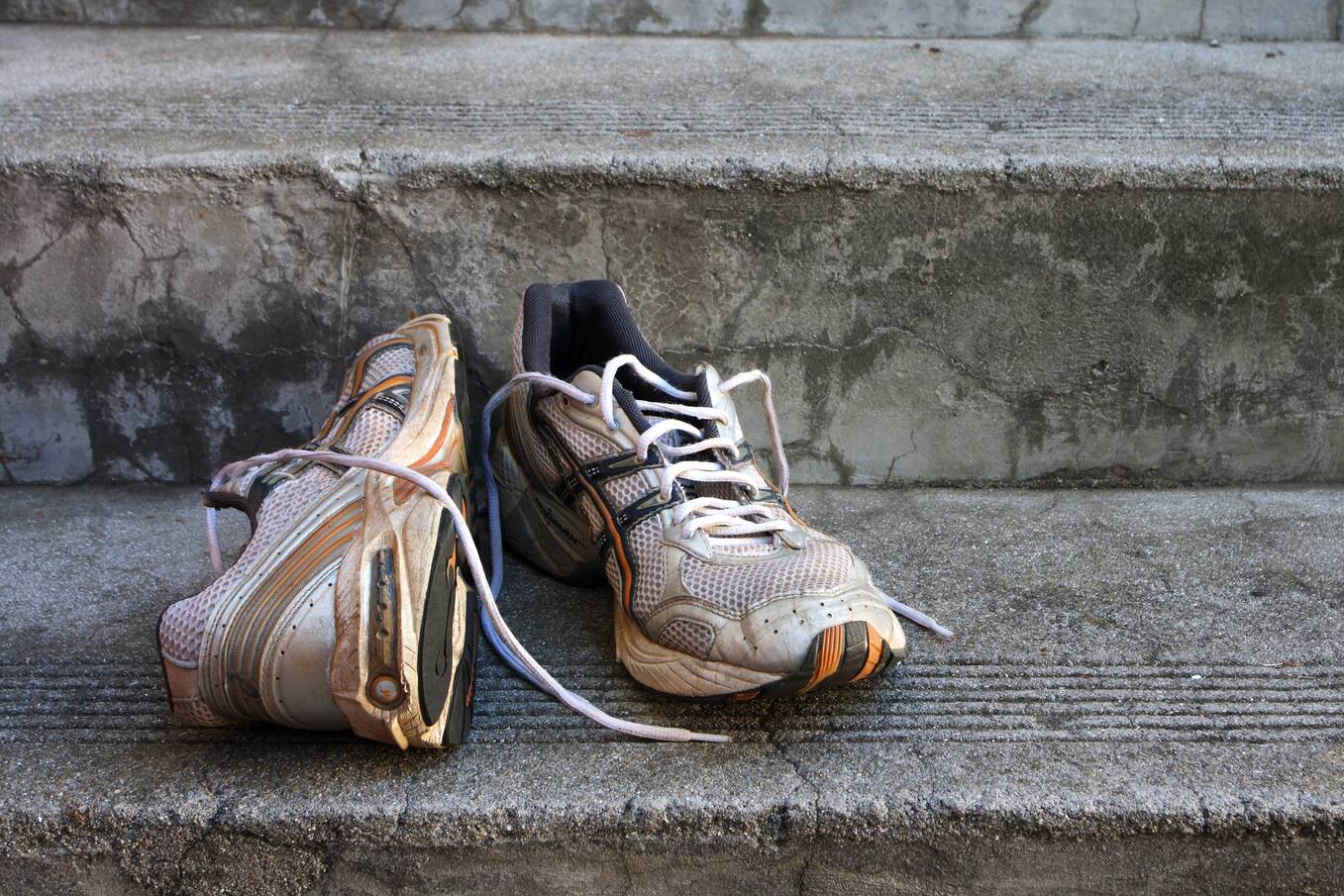Home>Misc>Featured>What Are The Different Types Of Running Shoes
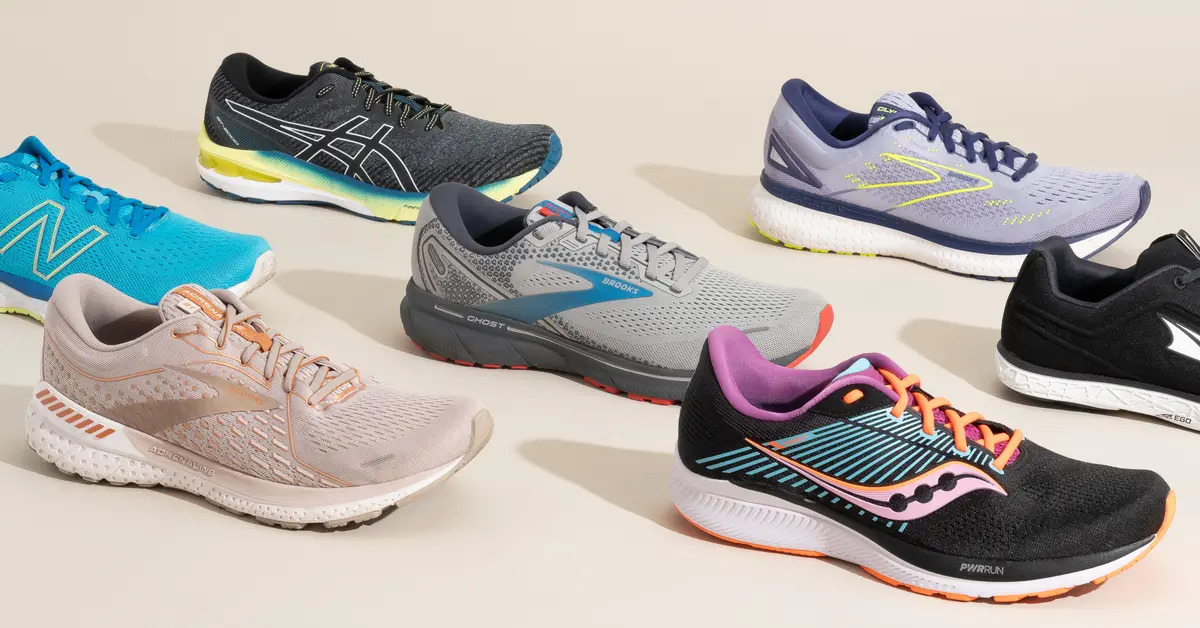

Featured
What Are The Different Types Of Running Shoes
Modified: January 22, 2024
Discover the featured running shoes available in various types such as minimalist, stability, and trail shoes to enhance your running performance and experience.
Introduction
When it comes to running, the right pair of shoes can make all the difference. With the vast array of running shoes available, finding the perfect fit can be overwhelming. Each type of running shoe is designed to cater to different foot types, running styles, and terrains, ensuring optimal comfort and performance for every runner.
Choosing the right running shoe is crucial for minimizing the risk of injuries and maximizing running efficiency. The type of shoe you wear should align with your individual biomechanics and the specific needs of your feet. Understanding the different types of running shoes available can help you make an informed decision and find the perfect pair to support your running journey.
In this article, we will explore the various types of running shoes, including neutral cushioning shoes, stability shoes, motion control shoes, minimalist shoes, trail running shoes, racing shoes, and cross-training shoes. By understanding the characteristics and intended purposes of these different shoe types, you can confidently select the perfect pair for your running needs.
Whether you are a seasoned marathoner, a casual jogger, or a trail enthusiast, there is a running shoe out there designed to meet your specific requirements. So, let’s dive deeper into the amazing world of running shoes and discover which type suits you best.
Neutral Cushioning Shoes
Neutral cushioning shoes, as the name suggests, are designed to provide a balanced level of support and cushioning for runners with neutral pronation. Pronation refers to the natural inward rolling of the foot upon landing.
These shoes are perfect for runners with a neutral foot strike who do not excessively roll their feet inward or outward during each step. They offer moderate cushioning in the midsole and a flexible sole, allowing for a smooth and comfortable ride.
Neutral cushioning shoes are ideal for runners who have a medium to high arch and a normal pronation pattern. They provide shock absorption to help minimize the impact on joints and offer a responsive feel that enables a natural range of motion.
These shoes are versatile and can be used for various types of running, including long-distance runs, daily training, and even some faster-paced workouts. They are typically lightweight and offer a good blend of cushioning, flexibility, and durability.
Key features of neutral cushioning shoes include a soft midsole, a flexible upper, and a cushioned heel collar for added comfort. These shoes also have a balanced weight distribution to help prevent excessive strain on any particular area of the foot.
It’s worth noting that neutral cushioning shoes are not recommended for runners with overpronation or underpronation. Overpronation occurs when the foot rolls inward excessively, while underpronation (or supination) refers to a foot that rolls outward. If you fall into either of these categories, you may require a different type of running shoe to address your specific needs.
In summary, neutral cushioning shoes are designed for runners with a neutral pronation pattern and medium to high arches. They offer a comfortable and balanced level of cushioning, making them suitable for various running activities. If you have a neutral foot strike and are looking for a versatile and cushioned shoe, neutral cushioning shoes may be the perfect choice for you.
Stability Shoes
Stability shoes are specifically designed for runners who experience mild to moderate overpronation. Overpronation occurs when the foot rolls inward excessively during the running gait, which can lead to instability and potential injuries.
These shoes feature a combination of cushioning and support to help control excessive foot motion and provide added stability. The medial (inner) side of the midsole is typically reinforced with firmer materials, such as dual-density foam or a stability post, to limit overpronation and guide the foot towards a more neutral position.
Stability shoes are characterized by a supportive arch and a structured heel counter that keeps the heel stable during the running motion. The midsole often contains additional cushioning to absorb impact and provide a comfortable ride.
Runners with low to normal arches and a tendency to overpronate can benefit greatly from stability shoes. By providing the necessary support and control, these shoes help promote proper alignment of the foot and ankle, reducing the risk of injuries such as shin splints, plantar fasciitis, and knee pain.
Stability shoes are suitable for a variety of running activities, including daily training, long-distance running, and even some faster-paced workouts. They offer a good balance of cushioning, support, and durability. However, it’s important to note that stability shoes are not recommended for runners with severe overpronation or those with rigid or high arches.
When selecting stability shoes, look for features such as a firm medial post, a midsole that provides cushioning and support, and an upper that offers a secure fit. Testing the shoes by taking them for a short run can also help ensure they meet your specific needs and feel comfortable.
In summary, stability shoes are designed for runners who overpronate and require additional support to prevent excessive foot motion. These shoes provide a combination of cushioning and stability features to promote proper alignment and reduce the risk of injuries. If you have mild to moderate overpronation, stability shoes may be the perfect choice to keep you running comfortably and injury-free.
Motion Control Shoes
Motion control shoes are specifically designed for runners with severe overpronation or flat feet. These shoes provide maximum support and stability to help correct excessive foot motion and maintain proper alignment during the running gait.
These shoes are characterized by their firm and supportive construction. They feature a combination of a robust medial post, a firm midsole, and a sturdy heel counter to control pronation effectively. The medial post, often made of denser foam or a thermoplastic insert, is strategically placed on the inner side of the midsole to limit excessive inward rolling of the foot.
Motion control shoes offer a high level of stability and control, making them suitable for runners with low arches or flat feet. The additional support and structure provided by these shoes help prevent overpronation-related injuries, such as shin splints, stress fractures, and ankle instability.
It’s important to note that motion control shoes tend to be heavier and less flexible compared to other types of running shoes. The extra stability and support come at the trade-off of some responsiveness and flexibility, but this is necessary to control excessive foot motion.
These shoes are best suited for runners who have a severe overpronation issue or conditions such as flat feet, where the arch is not well-defined or collapses during the running motion. They are typically recommended for daily training and long-distance running, where stability and control are important factors.
When selecting motion control shoes, look for features such as a substantial medial post, a rigid midsole, and a structured and supportive upper. It’s also helpful to try on the shoes and test them for comfort and stability by walking and running in them before making a purchase.
In summary, motion control shoes are designed for runners with severe overpronation or flat feet who require maximum support and stability. These shoes offer a firm and structured construction to control excessive foot motion and promote proper alignment. If you have severe overpronation or flat feet, motion control shoes may be the ideal choice to keep you running comfortably and injury-free.
Minimalist Shoes
Minimalist shoes, also known as barefoot shoes or minimalist running shoes, have gained popularity in recent years. These shoes are designed to mimic the sensation of running barefoot while still providing some level of protection and cushioning.
Minimalist shoes are characterized by their lightweight and flexible design. They have a low heel-to-toe drop, meaning the height difference between the heel and the toe is minimal or non-existent. The goal of these shoes is to allow for a more natural and minimalistic running experience, promoting a forefoot or midfoot strike rather than a heel strike.
These shoes have minimal cushioning and a thin sole, allowing for increased ground feel and proprioception. They encourage the foot and lower leg muscles to work harder, as there is less interference with the natural movements of the foot.
Minimalist shoes are often favored by runners who are looking to improve their running form and strengthen their feet and lower leg muscles. By encouraging a more natural running gait, these shoes can potentially help reduce the risk of certain running-related injuries, such as shin splints and knee pain.
It’s important to note that transitioning to minimalist shoes requires a gradual approach. The lower level of cushioning and support may initially put more stress on the muscles and tendons of the foot and lower leg. It’s recommended to start with shorter runs and gradually increase the mileage to allow your body to adapt to the new running style.
Minimalist shoes are not suitable for everyone. They may not be appropriate for runners with a history of foot or ankle injuries or those who require additional support and cushioning. It’s always best to consult with a healthcare professional or a podiatrist before switching to minimalist shoes.
When selecting minimalist shoes, look for a pair that provides a snug fit, good flexibility, and a wide toe box to allow natural foot movement. Starting with a more cushioned minimalist shoe can also help with the transition process.
In summary, minimalist shoes aim to mimic the feeling of running barefoot while still offering some level of protection. These lightweight and flexible shoes encourage a natural running gait and can help improve running form and strengthen foot and lower leg muscles. If you are interested in trying minimalist shoes, it’s important to transition gradually and carefully while listening to your body’s needs and limitations.
Trail Running Shoes
Trail running shoes are specially designed to tackle the challenges of off-road terrains. Whether you’re traversing rocky paths, muddy trails, or steep inclines, these shoes provide the necessary traction, protection, and stability for a comfortable and secure trail running experience.
Trail running shoes differ from road running shoes in several ways. They have a more rugged outsole with aggressive lugs that provide superior grip on various surfaces, including mud, gravel, and uneven terrain. The outsole is often made of durable rubber compounds that offer excellent traction and durability.
These shoes feature reinforced uppers and toe caps to protect the feet from rocks, roots, and other trail hazards. The uppers are typically made from breathable and water-resistant materials to keep your feet dry and comfortable during wet conditions.
Trail running shoes have a more supportive and stable construction compared to their road counterparts. They often have a higher stack height and a firmer midsole to provide cushioning and protection against sharp and uneven surfaces.
Additionally, some trail running shoes feature built-in rock plates that protect the feet from sharp rocks and jagged terrain. This extra layer of protection is particularly beneficial for technical trails with challenging underfoot conditions.
When selecting trail running shoes, consider the type of terrain you’ll be running on. For less technical or smoother trails, a light and flexible trail shoe may be suitable. However, for more technical and rugged terrains, a shoe with more stability and protection is recommended.
It’s also worth noting that trail running shoes may have different categories based on the type of trails they are designed for, such as “light trail,” “rocky trail,” or “mud-focused.” These categories may provide insights into the specific features and performance of the shoes.
Overall, trail running shoes are a must-have for those who enjoy exploring the great outdoors and venturing off-road. They are built to withstand the demands of rough terrains, provide reliable traction, and protect your feet from the elements. Whether you’re a seasoned trail runner or a beginner looking to hit the trails, investing in a good pair of trail running shoes will significantly enhance your off-road running experience.
Racing Shoes
Racing shoes, also known as competition or speed shoes, are designed specifically for runners who want to perform at their best during races or fast-paced workouts. These shoes are designed to be lightweight, responsive, and offer minimal cushioning to maximize speed and efficiency.
Racing shoes are typically characterized by their streamlined design and minimalistic construction. They prioritize weight reduction and feature a stripped-down upper and midsole to minimize bulk and unnecessary materials. The lighter weight allows for a more effortless and efficient stride.
These shoes often have a lower heel-to-toe drop compared to traditional running shoes, which encourages a more natural and forward foot strike. They typically have little to no supportive features, such as stability posts or extra cushioning in the midsole.
The outsole of racing shoes is usually made of lightweight and grippy materials to provide traction without compromising flexibility. The focus is on maintaining a high level of ground feel to enhance responsiveness and proprioception.
Racing shoes are typically designed for shorter distance races or fast-paced workouts, such as 5Ks, 10Ks, or track events. They are not intended for long-distance running or everyday training, as the minimal cushioning may not provide enough support for extended periods.
When selecting racing shoes, it’s important to consider your running style and personal preferences. Some runners prefer a more minimalist and lightweight design, while others may opt for a slightly more cushioned racing shoe for added comfort during longer races.
It’s also essential to gradually introduce racing shoes into your training routine, as they place more stress on the muscles and tendons due to their minimal cushioning. Start by incorporating them for shorter and faster runs to allow your body to adjust to the lighter and less supportive nature of these shoes.
Racing shoes can be a valuable tool for competitive runners looking to shave off seconds from their race times. Their lightweight and responsive nature can enhance speed, efficiency, and overall performance. However, it’s important to use them appropriately and sparingly to avoid the risk of injuries or overuse.
In summary, racing shoes are designed for runners seeking maximum speed and efficiency during races or fast-paced workouts. These shoes prioritize minimalism, lightweight construction, and responsiveness to enhance performance. If you’re a competitive runner looking to optimize your speed, investing in a pair of racing shoes may be a worthwhile choice.
Cross-Training Shoes
Cross-training shoes are versatile footwear designed to meet the demands of various types of workouts and training exercises. These shoes are suitable for a range of activities, including gym workouts, weightlifting, cardio exercises, and even light running.
Cross-training shoes are designed to provide a combination of stability, support, and flexibility, making them suitable for multidirectional movements and dynamic exercises. They have a well-cushioned midsole for shock absorption and a stable platform to support lateral movements and quick changes in direction.
One of the key features of cross-training shoes is their durable and non-marking outsole, designed to provide traction and grip on a range of surfaces, including gym floors and outdoor terrains. The outsole is typically made of a rubber compound that offers both flexibility and traction.
The upper of cross-training shoes is often made of breathable materials, such as mesh or synthetic overlays, to promote airflow and keep the feet cool during intense workouts. They also tend to have a supportive and secure fit, with features like padded collars and lacing systems for added comfort.
Cross-training shoes are suitable for individuals who engage in a variety of activities and need a versatile shoe that can handle different types of workouts. They are a popular choice among fitness enthusiasts, athletes participating in sports that require multidirectional movements, and those who prefer a single shoe for their various training needs.
It’s important to note that while cross-training shoes provide a great balance of support and flexibility, they may not be as specialized as shoes designed specifically for running or weightlifting. Therefore, if you have specific training goals or require more focused support for a particular activity, you may opt for sport-specific shoes.
When selecting cross-training shoes, consider factors such as the type of workouts you’ll be performing, the level of cushioning and support you require, and the fit and comfort of the shoe. Trying on different brands and models and taking them for a test run or workout session can help you determine the ideal cross-training shoe for your needs.
In summary, cross-training shoes are versatile footwear designed to meet the demands of various workouts and training exercises. They offer a blend of stability, support, and flexibility, making them suitable for a wide range of activities. If you engage in diverse workouts and need a versatile shoe to support your training needs, cross-training shoes are an excellent choice.
Conclusion
Choosing the right pair of running shoes is essential for maximizing performance, preventing injuries, and ensuring overall comfort during your runs. The different types of running shoes cater to various foot types, running styles, and terrains, allowing you to find the perfect fit for your specific needs.
Neutral cushioning shoes are ideal for runners with a neutral foot strike, offering a balanced level of support and cushioning. Stability shoes are designed for those who overpronate, providing additional support to control excessive foot motion. Motion control shoes are recommended for runners with severe overpronation or flat feet, offering maximum stability and control.
Minimalist shoes provide a lightweight and natural running experience, strengthening foot and lower leg muscles. Trail running shoes are built to handle the challenges of off-road terrains, offering traction, protection, and stability. Racing shoes prioritize speed and efficiency, making them ideal for competitive runners during races or fast-paced workouts.
Cross-training shoes are versatile and suitable for a range of activities, providing stability, support, and flexibility. Regardless of the type of running shoe you choose, it’s important to ensure a proper fit, taking into consideration factors such as arch type, pronation, and personal comfort preferences.
Taking the time to research and select the right pair of running shoes will have a significant impact on your running experience. It’s always recommended to try on multiple styles and brands, and if possible, test them out with a short run or workout to assess their comfort and performance.
Remember, running shoes are not one-size-fits-all. Each individual has unique needs and preferences, and finding the perfect pair may require some trial and error. Prioritize your comfort, support, and injury prevention when selecting your running shoes, and enjoy the miles ahead with confidence and optimal performance.
